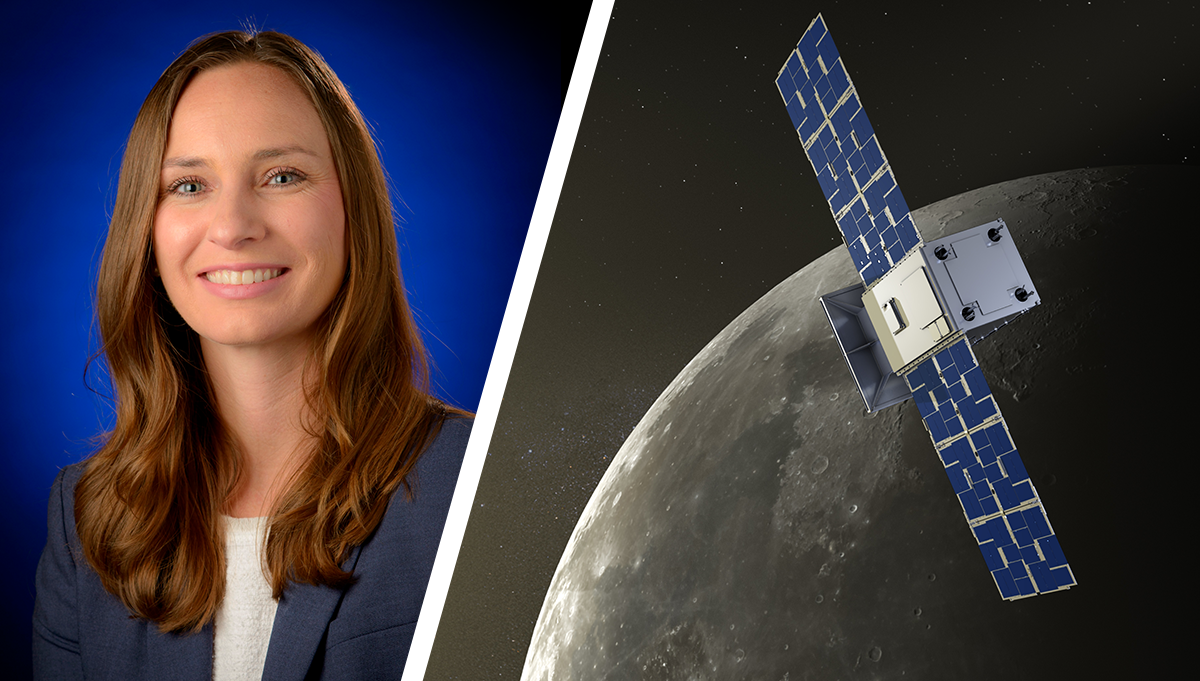
ARMD artist’s concept.
Photo Credit: NASA
Ian Boyd discusses knowledge sharing in NASA’s Aeronautics Research Mission Directorate.
Ian Boyd serves as the Chief Knowledge Officer (CKO) for NASA’s Aeronautics Research Mission Directorate (ARMD). In this role, Boyd helps foster a culture of knowledge stewardship, ensuring that policies and processes support the sharing of technical and program management knowledge and that the ARMD workforce has access to technologies that facilitate knowledge retention, sharing, and utilization. He helps advance this mission by advising the ARMD workforce on the application of knowledge stewardship practices and guiding efforts of the ARMD Knowledge Management Steering Group to ensure the aeronautics research conducted at NASA’s Ames Research Center, Armstrong Flight Research Center, Glenn Research Center, and Langley Research Center employs exceptional knowledge, state-of-the-art learning, and advanced technological agility.
What are your thoughts on how knowledge sharing affects mission success?
Effective knowledge sharing empowers our teams to accomplish the mission. Our success is predicated on effective collaboration with partners within our organization, government, industry, academia, and the public. Sharing our knowledge and being open to receiving partner knowledge is central to our collaborative efforts as it brings new perspectives and insights that might not be apparent when approaching an issue from a single point of view. Mission success truly requires a team effort, and if you can create an environment that fosters tacit knowledge sharing, as we’ve seen throughout NASA’s history, the results can be astonishing.
How do you think NASA’s technical workforce benefits from knowledge sharing?
I recently read observations from members of our technical workforce, and they noted that their work was much more about knowledge production than the actual artifact their project creates. That insight really encapsulates the importance of knowledge sharing for the technical workforce. For both fundamental and applied research, sharing what you know and what you are learning during the project enables the team to quickly generate insights and mitigate risk. Sharing those best practices and lessons learned allows the team to avoid potential pitfalls and build from an existing knowledge base, rather than starting from scratch. For the technical workforce, sharing their knowledge not only supports their current project but it also serves as an important legacy that will contribute to future projects’ success.
Are there any successful knowledge efforts or best practices in your organization that you’d like to highlight?
Within ARMD, a major point of emphasis is on the application of lessons learned. Beyond the creation, categorization, and dissemination of these lessons, our intent is to ensure that we are applying them to improve our policies, processes, and practices. We recently completed an extensive Pause and Learn exercise with one of our programs, which produced a host of lessons learned and best practices. The next step in our process was the most critical, as we leveraged those Pause and Learn insights as the foundation for formulating a new policy that will guide future projects. Our hope is that this focus on application will ensure that the lessons learned and best practices generated by our teams are directly linked to our organizational growth and development.
Are you observing any trends or cultural shifts that affect knowledge management going forward?
The proliferation of collaboration tools combined with the application of artificial intelligence/machine learning technologies offers new opportunities for synthesis, analysis, and learning. As this work grows, we will need to continue to maintain a focus on the needs of our people and how we can create environments that are conducive to knowledge sharing. In some instances, leveraging new and emerging tools and technologies is the best method, while in others, direct personal interactions will be a better fit. If we can incorporate these new tools and methods as part of a human-centric knowledge stewardship approach, we will be well positioned to meet the knowledge needs of the evolving workplace.
What impact are technologies such as machine learning and artificial intelligence beginning to have on your knowledge sharing activities?
Some of the applications we are using leverage aspects of these technologies to improve our ability to identify and access the applicable data and information needed to generate knowledge. Using these technologies to not only search existing datasets but also surface new observations and insights can present a compelling use case. These technologies also offer the potential to change the trajectory of data and information that was headed to an inaccessible archive and deliver it in a manner that sparks new insights and facilitates knowledge growth.
Who are the biggest users of the knowledge services in your organization?
We’ve seen strong adoption across our organization. Within each discipline, we’ve found that there are advocates that understand the importance of growing, retaining, and sharing knowledge. Creating the Knowledge Management Steering Group, which includes representatives from across the organization, has certainly helped grow awareness and support. With the recent successful deployment of a centralized collaboration platform that supports knowledge growth, retention, and sharing across our organization, everyone can play a role. We are also aligning our efforts with the project life cycle to ensure that existing processes apply knowledge stewardship principles and support organizational learning.









